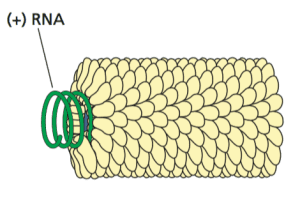

Long before bacteria, fungi, and viruses were identified, it was known that some diseases could be transmitted from person to person. As early as 1728 the term virus was used to describe an agent that causes infectious disease. The nature of such agents was unknown, but because the word virus comes from the Latin meaning a poison, we can surmise that the agents were thought to be liquids.
In the 1800s the work of Pasteur, Cohn and Koch founded the field of microbiology, leading to the germ theory of disease: microbes could cause infectious diseases. In fact, Pasteur thought that all infectious diseases were caused by microbes, as witnessed by his statement that ‘every virus is a microbe€™.
A key point in the history of virology was the development in 1884 by Charles Chamberland, an associate of Pasteur, of a porcelain filter that could retain bacteria. The filters were initially used to provide bacteria-free water for the laboratory. Pasteur, working on the agent of rabies, found that it could pass through such filters and thought it to be unusually small.
Later Ivanovsky and Beijerinck showed that the agent of tobacco mosaic disease to be small enough to pass through filters. Beijerinck had the important insight that the pathogen could only be propagated in plants, not in broth as was known for bacteria. He called it a ‘contagious living fluid€™. After this work many similar agents were found and the name ‘filterable virus€™ was applied to distinguish them from infectious agents that were retained on the filter.
At this point the distinctions between bacteria and viruses were on the basis of filterability and reproduction in broth. The exact nature of ‘filterable viruses€™ was obscure. Four subsequent observations were essential in leading to our current concept of viruses.
Bacteriophages were discovered in 1917 and found to cause clear spots, or plaques, on lawns of bacteria growing on agar plates. Such behavior did not fit in with the previously ‘fluid€™ nature of viruses. Bacteriophages were visualized by the electron microscope for the first time in 1939, proving beyond all doubt that they were particulate.
Crystals of the tobacco mosaic disease agent (pictured) were produced by Stanley in 1935, which to chemists proved that filterable viruses were not only chemicals but could be made pure and homogeneous. To Stanley this observation meant that filterable viruses were ‘infectious proteins€™, a conclusion he reached by ignoring the small amounts of phosphate present in his crystals. He was wrong about tobacco mosaic virus, whose RNA was later shown to be infectious, but many years later infectious proteins (prions) were discovered.
The last important observation on the road to virus was the development of the one-step growth curve of bacteriophages by Ellis and Delbruck in 1939. They noted that when viruses were added to bacteria, there was initially a lag phase during which no new infectious viruses were produced. This lag phase was in contrast to observations made with bacteria: when added to broth, they immediately began to divide. This result showed that viruses were not simply miniature bacteria. We now know that the lag phase is a period during which new viral components are being synthesized which are later assembled to form infectious particles. Bacteria reproduce by binary fission, and viruses reproduce by making new parts and assembling them.
As a consequence of these observations, the word ‘filterable€™ was dropped and these agents became simply ‘viruses€™ as their distinction from bacteria and other infectious agents became clear. And that is how we came to today€™s definition of virus, which began as a catchall for all agents of disease.
This post was inspired by William C. Summers

Pingback: The evolving concept of virus – Virology Hub
Yes you are right virus are infection causing agent . It infect living organism only because it reproduce only when they become the part of living organism.virus structre help the virus to cause infection. In 19th many new viruses was discover that wasa help full for human.
https://educationspot.net/virus-history-of-viruses-types-and-morphology-of-virus/